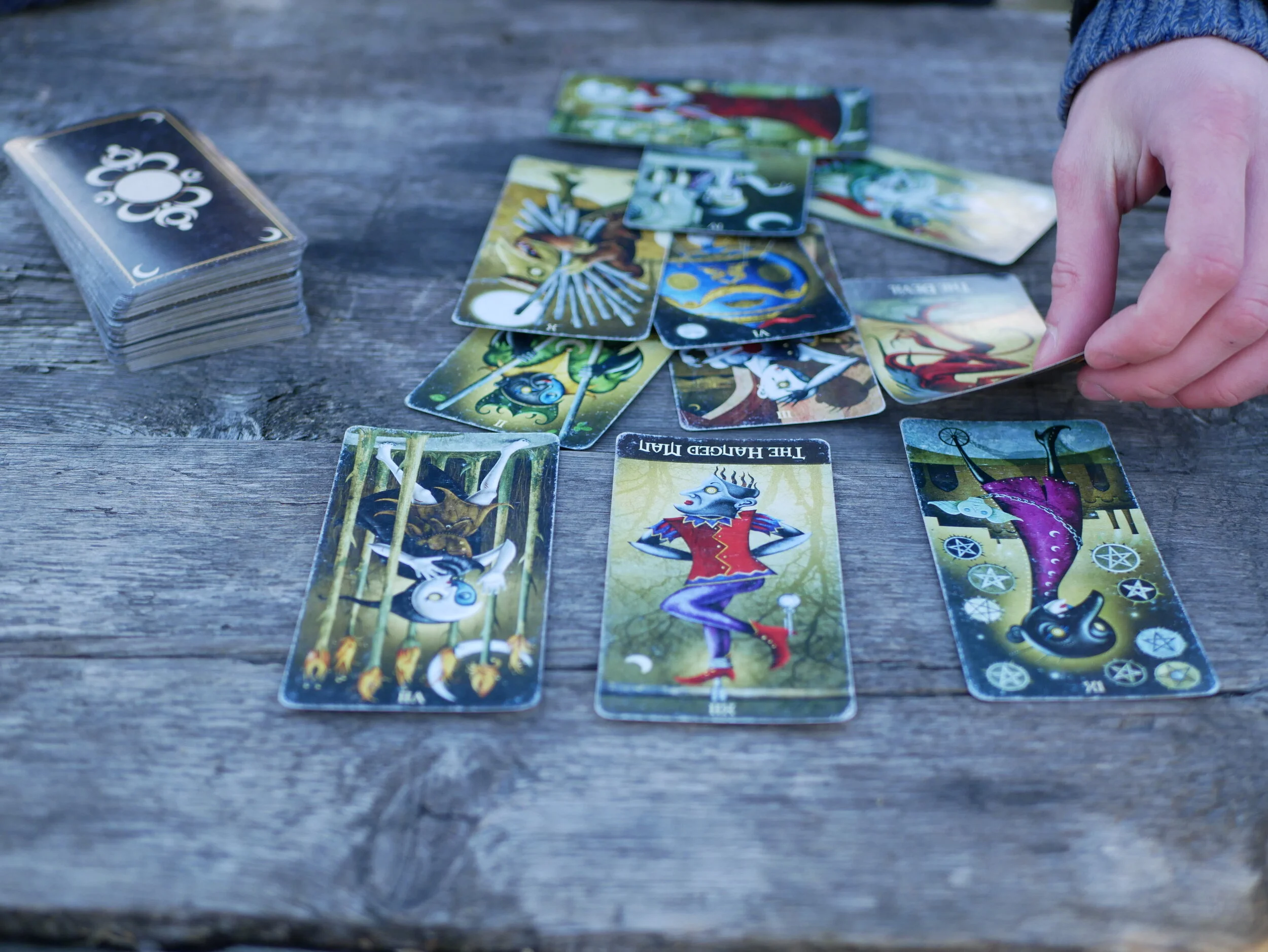Create Your Own Tarot Spreads
Create Your Own Tarot Spreads
A tarot spread is a diagram of card positions that allows you to do a helpful and understandable tarot reading. Typically, each position asks a question. The card that falls into that position must be read in the context of the position.
It is possible to do a good tarot reading without a positioned spread. It is also possible to include numerous spreads and techniques in a tarot reading session. Not every question calls for an entire spread. Yet, a good tarot reader needs to know when a tarot spread would be helpful, and how to most effectively work with a spread.
Each tarot spread has a theme. The spread may be comprehensive in that it addresses many or all departments of life. Or, a spread may be created to address a specific concern.
How the cards are laid out graphically can matter to the efficacy of a tarot spread. Sometimes the cards are meant to form a shape that relates to the theme of the spread. Whatever the graphic shape, we tend to notice how cards that are near each other interact with each other. We often create spreads that are like trees, where a single card addresses a larger issues and multiple cards branch from that to answer questions about that issue.
There are many traditional spreads, many books of tarot spreads, and many spreads created by professionals and shared on social media. With so many available spreads, why would you want to create your own?
There are many possible reasons to create your own spreads. First and foremost, since working with tarot spreads is such an important skill, the act of creating spreads helps us become better at reading spreads.
The act of making spreads is in itself creative, and therefore, fun. It’s also fun to share the spreads we create with others.
No matter how many spreads exist in the world, there is always room for more. There are an infinite number of questions we can answer with tarot.
As we work to create new spreads, we sometimes stumble onto new ways of working with the cards, and new techniques that improve our tarot practice.
Tarot spreads can have as few as two cards, or as many as seventy-eight.
When you create your own spread, it will likely fall into one of three categories.
You might create a comprehensive spread. This would be a larger spread, perhaps ranging between six and fifteen cards. You would want each position to reflect an aspect of life. The goal of this spread would be to get as complete a picture as possible of what is going on in a person’s life. Traditional comprehensive spreads include the Celtic Cross and the Astrology Wheel.
Another type of spread is a themed spread, or a situational spread. A themed spread might be created for a specific holiday, or a specific time of astrological transition, such as a full moon or a mercury retrograde. The graphic shape made by the cards might reflect this theme.
A situational spread could be created to use to answer a specific type of question, such as how to handle a relationship problem, or how to make a career transition.
These sorts of spreads can be shared with others and can be performed when need arises or when the time is appropriate.
It’s also possible to create a spread for a single use. These spreads are often the most powerful. I will occasionally use this method when a client presents with a unique and multi-faceted problem.
A single-use spread is likely to include many cards. You may also add positions as you are performing the spread, based on what the cards reveal.
A single-use spread allows you to break a complex issue into its components, and consider all aspects of the situation in order to find guidance, understanding and direction.
You can create a spread with a pen and a piece of paper, or you can create a spread using any sort of word processing or graphic software.
Sometimes, in a tarot reading, you might create a two- or three-card spread in the moment to answer a specific question. For example, if you are deciding whether or not to do something, you might pull one card to show what happens if you do it, and another card to show what happens if you don’t.
The more you allow yourself to explore tarot spreads and tarot reading techniques, the better you will become as a tarot reader.
